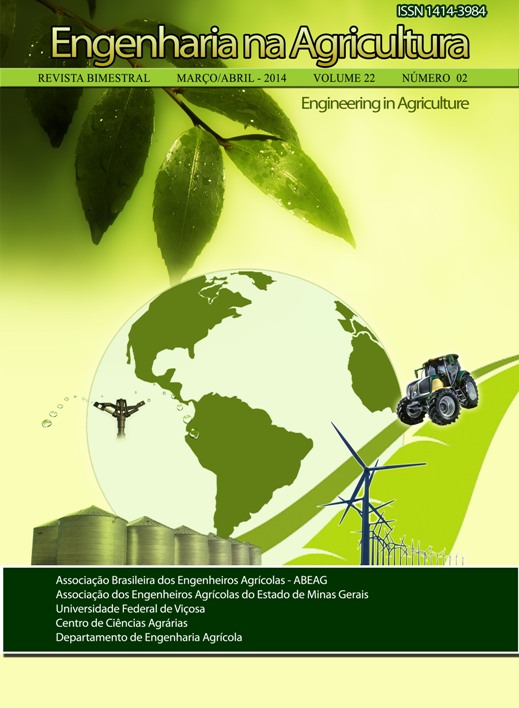INFLUENCE OF CROSS SLOPE AND OPERATION SPEED ON THE PERFORMANCE OF PNEUMATIC SEED METERING WITH SOYBEAN SEEDS - DOI: 10.13083/1414-3984.v22n02a03
DOI:
https://doi.org/10.13083/reveng.v22i2.499Keywords:
máquinas e implementos agrícolas, mecanização agrícola, semeadora-adubadora, Glycine max (L.)Abstract
The study sought to evaluate the influence of cross slope on the performance of three pneumatic feeders submitted to different operation speeds using soybean seeds. The work was conducted at the Laboratory of Research and Development of Agricultural Machinery (LASERG), located at the Universidade Federal de Santa Maria, with the aid of a workbench that simulates certain operating conditions of sowing, such as variation of speed and slope of feeders. A randomized block design was used with split plots and three experimental factors: cross slope of three seed metering levels (± 11 ° and leveled), three pneumatic seed feeders and three operation speeds (5, 7.5 and 10km.h-1). Measuring consisted of evaluating 250 spacings per repetition. For the regularity of distribution the percentage of acceptable, double and flawed spacing was evaluated, and by the coefficient of variation of the data collected in the seed feeder. The results showed that increasing the seed spacing was influenced by variation of the operation speed, significantly impacting the average results of acceptable and flawed spacing, as well as precision. For the slope factor there was significant difference according to the Tukey test.Downloads
Downloads
Published
How to Cite
Issue
Section
License
Authors who publish with this journal agree to the following terms:
The author(s) authorize(s) the publication of the text in the journal;
The author(s) ensure(s) that the contribution is original and unpublished and that it is not in the process of evaluation by another journal;
The journal is not responsible for the views, ideas and concepts presented in articles, and these are the sole responsibility of the author(s);
The publishers reserve the right to make textual adjustments and adapt texts to meet with publication standards.
From submission, the author is fully conceding the paper's patrimonial rights to the publication, but retaining the owner of its moral rights (authorship and paper's identification) according to Creative Commons Attribution-Noncommercial.








 Licensed by
Licensed by 